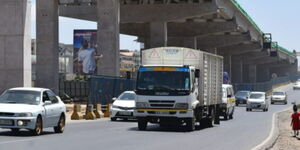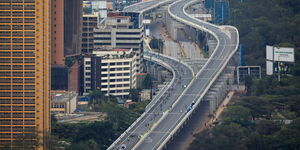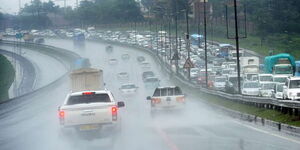Kenya’s main water catchment area, Mau Forest, has lost 25 per cent of forest cover in the last 36 years, this is according to new satellite images.
However, what is more worrying is that the satellite pictures show the forest is facing another onslaught of deforestation in 2024.
According to satellite data from Global Forest Watch (GFW), the deforestation of Mau Forest dropped dramatically in 2021 and 2022 before shooting back up in 2023. Between 2001 and 2022, more than 19 per cent of tree cover was lost.
The data and imagery further indicated that the Mau Forest has been experiencing another major bout of deforestation in 2024. This is despite President William Ruto’s bid to increase the forest cover in the country to 10 per cent.
In the images below, you can see the borders of the Mau Forest Complex and the various places where the forest cover has been lost. These areas are marked by purple colour.
The Mau Forest Complex includes the Maasai Mau, Eastern Mau, and Western Mau forest blocks.
This year, clearing activity appears to be concentrated in the Northern Mau forest reserves of Northern Tinderet, Tinderet, and Mount Londiani, as well as in Olpusimoru Forest Reserve in Southern Mau.
The degazettement of forest reserves and continuous widespread encroachment have led to the destruction of over 247,105 acres of forest since 2000, representing roughly one-quarter of the Mau Complex's area.
The primary drivers of deforestation are agricultural expansion, including slash-and-burn farming for cattle grazing and crop cultivation. Fires are commonly used to clear land, contributing up to 14 per cent of annual forest loss between 2012 and 2017, according to research by geospatial data analyst Stefanie Mehlich.
Kenya Forest Service (KFS) denied that the tree cover in the forest has been dwindling, saying the satellite images are not the real situation on the ground and are not corroborated by any evidence on the ground.
According to the KFS, the areas colored purple in satellite images are outside the forest and are within the areas bordering Mariashoni, Likia, Nesuit, Sururu, Olupusimoru, Tinet, Saino, and Keringet among others.
The dwindling forest cover poses a threat to the Rift Valley region, the country’s breadbasket. As deforestation disrupts rainfall patterns, the region could experience reduced rainfall, directly affecting agricultural productivity.
Given the Rift Valley’s crucial role in feeding the nation. Such disruptions could severely compromise Kenya’s food security. Lower yields might force increased reliance on costly imports, pushing food prices higher and straining household budgets.
While other factors like climate change and global weather phenomena also influence rainfall, deforestation amplifies these challenges, creating a dangerous feedback loop with far-reaching economic and social consequences.












